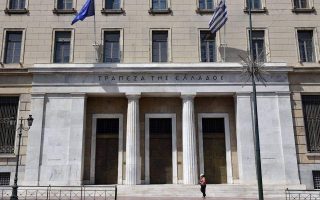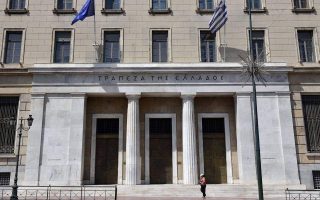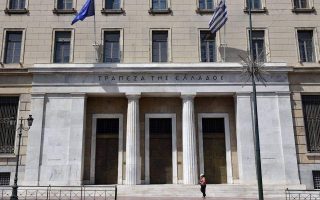BoG: Banks on right path to NPL reduction

The Bank of Greece considers it possible that the rate of nonperforming loans in the country will drop below 10% by the end of 2022, despite the uncertainties and the new bad loans created as a result of the pandemic.
Therefore, the central bank noted in its monetary policy report on Monday, “banks ought to review the sufficiency of their provisions on credit risk, particularly the repayment capacity of borrowers hurt by the pandemic, given that the state measures distort the real picture.”
The BoG warns that the NPL reduction strategy will increase the share of funds corresponding to deferred tax credits. It notes that in the year’s first quarter, both the Common Equity Tier 1 (CET1) index and the capital adequacy index posted a slight reduction from 2020, but remained at satisfactory levels (13.6% and 15.6% respectively). Still, “they are now lagging the European average.”
Amid the adverse impact on the capital adequacy indexes of banks from the loan securitizations, the Bank of Greece considers particularly positive the capital strengthening initiatives of banks, such as the 1.4-billion-euro share capital increase and the €600 million bond issue by Piraeus Bank, and the €500 million bond issue plus the €800 million share capital increase by Alpha Bank this week.
On the other hand, the central bank finds there are concerns about the “relatively weak capital adequacy figures of certain non-systemic lenders,” implying that some cooperative banks had better resort to share capital increases.
At end-March 2021 the NPL sum amounted to €47.3 billion, with about 58% of that concerning business loans, 28% mortgages and the rest consumer loans. Approximately half of the sum has to do with loan contracts banks have already called, followed by loan deals with uncertain collection and loans delayed by more than 90 days that have not yet been called. The NPL ratio of all loans remained high at end-March at 30.3%, almost 12 times higher than the eurozone average.
The activation of the new bankruptcy code that will contribute, as the BoG notes, to the improvement of banks’ assets and generally the strengthening of economic activity, is also considered a positive by the central bank.





